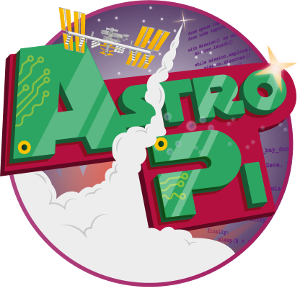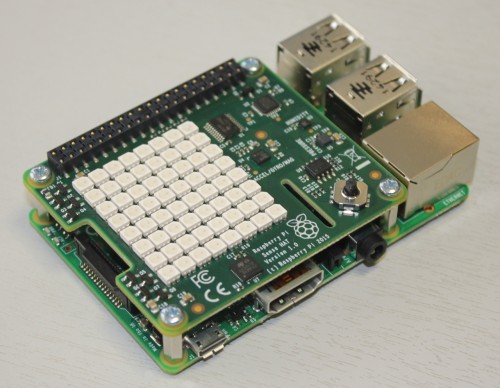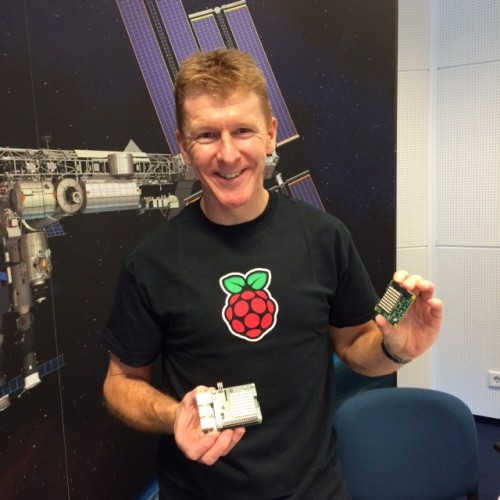| 
Stop! Before you read anything please watch NASA astronaut Reid Wiseman giving us a quick fly-through of the ISS. In the video you see various computers and screens on the walls and it’s crazy to think that two Raspberry Pis will soon be there alongside them. Even crazier to think that you can get your code running on them! What would you make them do? A space tamagotchi perhaps?! So let’s have a look at the flight hardware shall we? 
…and here is a picture of everyone’s favourite spaceman, British ESA astronaut Tim Peake, taking a short break from his training to check it out for himself.
 Image courtesy of ESA Tim is going to get a rather awesome (and expensive) space grade aluminium case with heat dissipation fins, Velcro strips and support arm attachments for his Astro Pi. No you cannot buy this case, trust me it will be prohibitively expensive! What you’ll get is what you see in the pictures above. It will either be free as a reward for submitting a good primary or secondary school idea by the 3rd of April or, if you buy one, around £30 + delivery. There will be another announcement when they are on sale. Below is a summary of the Astro Pi software and hardware. If you have any questions please comment below. We’re all standing by to answer you! Python API - Installable through PIP
- Provides effortless access to all of the hardware features below
- Full documentation will be available on GitHub here
- Example code
from astro_pi import AstroPi ap = AstroPi() ap.show_message("One small step for Pi!",text_colour = [255,0,0]) This will just scroll the text One small step for Pi! on the LED matrix in red. Note: The data sheet links below are only for those of you who really want that information, most humans don’t need to look at them at all! I²C Sensors - Inertial measurement sensor: ST LSM9DS1 (data sheet)
This is a 3D accelerometer, 3D gyroscope and 3D magnetometer combined in one chip. It will give you the pitch, roll and yaw orientation of the Astro Pi and therefore the ISS itself. It can also be used to detect when the ISS booster rockets are being fired or just as a compass to find the direction of North. - Barometric pressure and temperature sensor: ST LPS25H (data sheet)
This will give you a measurement of air pressure in Pascals or Millibars as well as the temperature in centigrade. - Relative humidity and temperature sensor: ST HTS221 (data sheet)
This gives you the percentage of relative humidity as well as the temperature in centigrade. The sensor is good enough to detect the water vapour in human breath so you could use it to detect the presence of the crew working near the Astro Pi. Inputs - PCB-mounted 5-button miniature joystick: Alps SKRHABE010 (data sheet)
Up, down, left, right and middle click. This will emulate the keyboard cursor keys and Enter for the middle click. Accessible via standard Linux event system /dev/input/event* - Additional GPIO push buttons will be accessible on the side of the aluminium flight case for functions such as controlled shut-down and reset. These will also be usable in your code via GPIO interrupt detection or polling. You are welcome to re-create them manually on your Astro Pi with any type of push button you have to hand.
- Standard Pi Camera Module (sensor data sheet)
- Pi NoIR Camera Module
Outputs - 8×8 RGB LED matrix with ~60fps refresh rate and 15-bit colour resolution (RGB 5 5 5): Cree CLU6AFKW/CLX6AFKB (data sheet)
Accessible via frame buffer driver /dev/fb1 where each pixel is 16 bit (RGB 5 6 5). This is the only real form of visual output that the Astro Pi computers will have up on the ISS. For a number of technical and safety reasons we are not allowed to plug the HDMI or Composite outputs of the Raspberry Pi into anything on the ISS. Micro controller
- A small MCU drives the LED matrix and scans for joystick input: Atmel ATTINY88 (data sheet)
It’s not the intention for this to be reprogrammable by the user. For more information on the Astro Pi: Your Code in Space competition please visit astro-pi.org and click on How to Enter in the toolbar at the top. | 


No comments:
Post a Comment